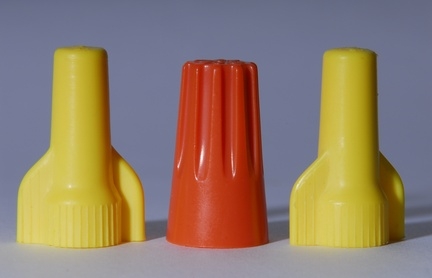
Splicing automotive electrical wire is a bit more involved that just twisting two wires together. In almost all instances, automotive electrical wires are subject to conditions involving heat, cold and steady vibration. It's important when splicing wires for auto accessories, engine functions or electrical lighting to safeguard against the wires touching other wires or metal components, and that the wires stay in place and don't work free. There are two common methods used to splice automotive electrical wires: twist and braid. Each has its advantages, depending on the application.
Splicing is nothing more than connecting two or more wires together to complete a wiring circuit. When two wires come together, a quick twist can join them securely. Using wire strippers, remove a short section of the plastic insulation on each wire to expose the copper or steel wire. A quick twist of the two wires together will ensure good contact and uninterrupted power. When twisted, a drop of hot tin solder on the length of the twist will keep the wires from wiggling apart when the car is operating and vibrating.
If bringing together three or more wires, a twist is not the best option. Twisting the wires could mean only two of the three wires make a full connection. Instead, strip enough insulation to get a good length of exposed metal on all wires. Then, in a manner similar to a hair braid, bring the strands of wires together so that all wires make good contact with each of the other wires. Again, after braiding, a touch of solder will seal the connection.
Once the wires are spliced, there are two ways to seal the splice against any disturbance: twist caps and heat shrink seal. Twist caps are plastic caps very similar to what's used on a tube of toothpaste and great for twist splices. The inside is lined with a threaded metal sleeve. Put the cap on the spliced wires and screw it on clockwise. The threading will adhere to the wires and solder, and screw down to make a water-tight seal that will resist both temperature and vibration changes.
Heat shrink seal is available in most home supply and auto supply stores. It looks like a small piece of thin-walled black rubber hose. Just slide a piece of shrink seal on a wire before braid splicing the wires together. Once spliced, slide the heat shrink seal over the splice. Then, using a heat source (hot air dryer, hot soldering iron or the open flame of a cigarette lighter or match), run the heat source back and forth over the length of the tube. Do not stop in one place and burn the tube but heat it evenly. As the tube heats it won't melt, but will start to contract and seal the splice tight. As always, when working with high heat around an automobile, be sure to avoid any gasoline fumes or standing oil around the engine.